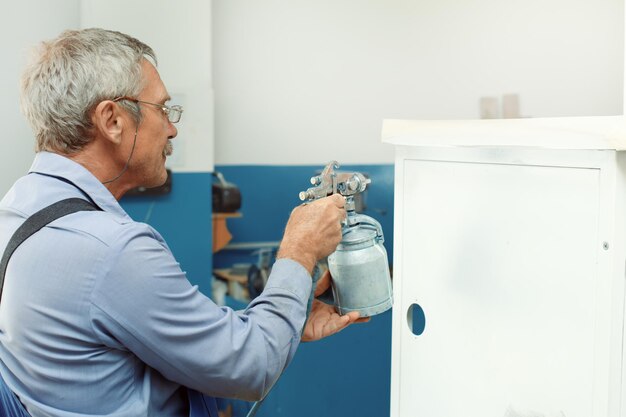Simplifying the Setup: How to Connect an Ice Maker to Your Refrigerator
Imagine the convenience of always having ice ready on demand. No more fumbling with ice trays or making last-minute water runs when guests pop over. Installing an ice maker in your refrigerator can transform daily life in the kitchen. Whether you're sipping on cool lemonade in the summer or hosting a dinner party, having a seamlessly connected ice maker is a great advantage.
Embarking on the journey to set up your ice maker might seem daunting initially, but with the right guidance and tools, it becomes a straightforward process. This article will guide you through every step of setting up your ice maker, exploring relevant tips and tricks to ensure a smooth operation. Let's dive in and make your journey from ice cube tray to automatic ice-maker blissful and hassle-free.
📦 What You Need to Get Started
Before diving into the installation, ensure you've gathered the necessary tools and supplies. Preparation is key, so here's a checklist to get you started:
Essential Tools:
- Wrench: An adjustable wrench will work for a range of sizes.
- Screwdriver: Depending on your refrigerator model, you may need either a Phillips or flathead.
- Drill (if required): For creating holes to fit water lines if necessary.
Supplies:
- Water Line Kit: Includes the tube, fittings, and saddle valve necessary for connecting the ice maker to your water supply.
- Teflon Tape: Ensures leak-proof connections.
- Bucket or Towel: Useful to catch any water spills during the installation.
Taking the time to assemble these will streamline your installation process and eliminate last-minute store runs.
🧰 Step-by-Step Installation Guide
Let's break down the installation process into manageable steps:
Step 1: Locate the Water Supply
Identifying the correct water supply is crucial. Typically, you'll find it beneath the kitchen sink or directly behind the refrigerator.
- Under the Sink: If your refrigerator is near the sink, you might have luck finding a convenient hookup here. Simply attach the water line to the cold-water pipe.
- Behind the Refrigerator: Some kitchens come equipped with a dedicated valve specifically for ice makers. Check there before starting.
Step 2: Turn Off the Water and Power
Before proceeding with any installation, it’s important to ensure safety:
- Power Off: Unplug your refrigerator before starting any work.
- Water Off: Shut the water supply off to prevent any unexpected flooding.
Step 3: Install the Saddle Valve
Attach the saddle valve to your cold-water pipe. This valve will regulate the water flow to your ice maker. Follow these steps:
- Position and Secure: Position the valve on the cold-water pipe then secure it tightly with the accompanying screws.
- Pierce the Pipe: Carefully turn the valve handle to pierce the pipe. This action creates a hole for water to pass through to your ice maker.
Step 4: Connect the Water Line
Securely connect the water line to the saddle valve. Ensure there are no kinks or bends in the line that could restrict water flow.
- Attach Firmly: Use a wrench to secure the connection between the tube and the valve. Do not over-tighten to avoid damaging threads.
- Route the Line: Lead the water line to the rear of your refrigerator, ensuring a direct and unobstructed path.
Step 5: Attach the Water Line to the Ice Maker
At the rear of your refrigerator, locate the water inlet port on your ice maker and connect the water line here.
- Ensure a Tight Fit: Use Teflon tape on the threads to prevent moisture leakage.
Step 6: Test the Setup
Now it’s time to check your connections:
- Turn on the Water Supply: Gradually open the valve to let water flow to your ice maker.
- Inspect for Leaks: Observe all connection points for leaks. If any are detected, tighten them or apply more Teflon tape.
- Activate the Ice Maker: Plug the refrigerator back in and switch the ice maker on. It might take a few hours to produce the first batch of ice.
🚫 Common Installation Mistakes to Avoid
Connecting an ice maker isn't always smooth sailing. Here are common pitfalls and how to dodge them:
- Using Hot Water Lines: Hot water can damage the ice maker. Always connect to a cold-water source.
- Ignoring Instructions: While it's tempting to wing it, always follow your refrigerator's user manual for specifics.
- Over-tightening Connections: This can lead to stripped threads and potential leaks. Tighten just enough to form a secure seal.
🔄 Maintenance Tips for Optimal Performance
Once your ice maker is up and running, regular maintenance ensures it stays that way:
Regular Cleaning
- Weekly Rinsing: Empty and rinse the ice bin weekly to prevent odor or taste transfers.
- Monthly Deep Clean: Every month, conduct a thorough cleaning of both the ice bin and the ice chute.
Check the Water Filter
- Filter Replacement: A swollen or clogged filter can hamper efficiency. Replace the water filter every six months for optimal flow and cleanliness.
💡 Key Takeaways
To reinforce your learning and aid quick reference, here’s a handy summary of the process:
- 🛠 Tools Required: Wrench, screwdriver, Teflon tape, drill (if needed).
- 🔄 Process Steps: Locate water supply → Turn off water and power → Install saddle valve → Connect water line → Test for leaks.
- ⚠️ Avoid Mistakes: Connect to cold-water lines, avoid over-tightening, and never skip user manual guidelines.
- 🔍 Maintenance Essentials: Clean ice bin weekly and replace filters bi-annually for best performance.
Embrace the Icy Convenience!
By following this guide, you have not only added a touch of convenience to your kitchen but also mastered a useful DIY skill. With an automatic ice maker in your arsenal, hosting gatherings or creating refreshing beverages becomes an easy-going affair. Embrace the cold, enjoy the ease, and savor the simplicity your new appliance brings to daily routines.
